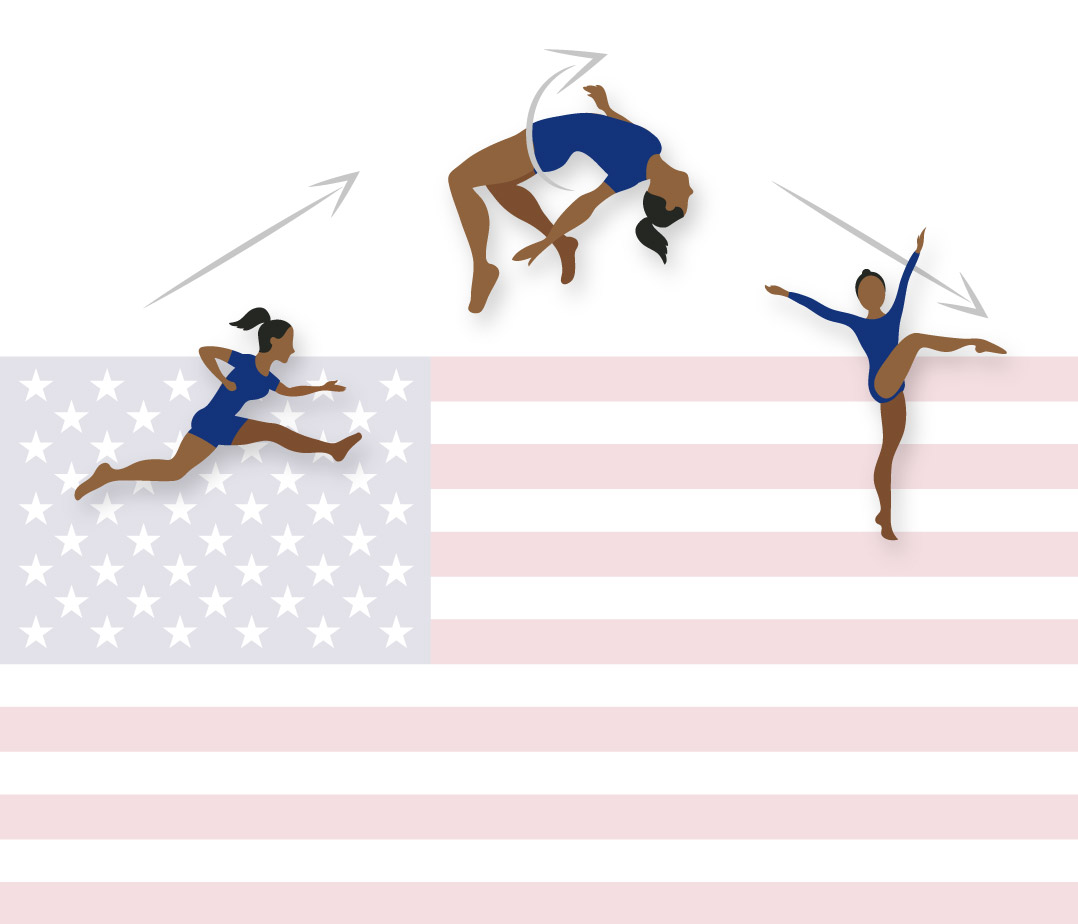
Emma Shell — July 21, 2021
Physics at the Summer Olympics
It’s finally here! After a year-long delay, the Summer Olympics will finally be held July 23, 2021 to August 8, 2021. Athletes from countries all over the world will gather in Tokyo to compete for the gold. Most of us will be glued to our televisions to cheer on the U.S. athletes representing our country in a variety of events. The 2D images of humans pushing the boundary of physical accomplishment will inevitably pale in comparison to being there. It is easy to forget that these men and women have spent years of their lives training for these events.
So, how is it possible that a human being can jump 18 feet into the air with the aid of only a pole? Physics can actually help us understand just how amazing each event is. For example, understanding how much force is required to propel a shot put 10 feet makes it clear just how strong the thrower is. To demonstrate the force of physics at the Olympics, we will be looking at three different events: pole vault, uneven bars and skateboarding (new to the games this year).
Pole Vault
Few things are as amazing as watching an athlete send themselves 10-20 feet in the air. The pole vault event requires the participant to use a pole to propel themselves into the air and clear a bar set at varying heights. The athlete then lands on the other side. It may look impossible, but the laws of physics make pole vaulting a reality.
This Wired article by Rhett Allain explores the principles of physics that apply to pole vaulting. Allain uses the work-energy principle to illustrate how pole vaulting is accomplished. This principle states that the work applied to a system is equal to the change in energy. The athlete must run a certain speed in order to gain kinetic energy that can then be stored in the pole, which is what causes the bend. The stored energy then increases the jumper’s gravitational potential energy which allows them to reach the heights that they do.
Gymnastics
Simone Biles captivates audiences by making everything she does look easy. The audience aches to try gymnastics for themselves. However, those viewers would most likely find that they are incapable of completing a basic flip. This is because Biles has mastered using the right amount of power to propel herself into the air. She can also make her body rotate by simply folding her arm to her chest at just the right time. Just as in pole vaulting, physics plays a major role in the movement of the gymnasts like Simone.
Oregon State University explored the physics behind its own gymnastics team in this video. A graduate student studying physics shows how to calculate the force exerted into the mat as a gymnast lands. The potential energy of the gymnast is converted into kinetic energy as gravity pulls her to the ground. The mat helps bring the gymnast’s energy to zero, but the amount of energy exerted is equal to that of two football players! This just goes to show how strong gymnasts really are.

Skateboarding
This year at the Tokyo Olympics, six new sports will be featured. Among these, skateboarding will make its Olympic debut. There will be two types of skateboarding: park and street. There will be mens and womens events for each type. Are you curious about what these events will look like in practice? You can learn more about how the events will take place in this article.
Skateboarding in the Olympics will not look like it does at the neighborhood skate park. Well, unless you have nationally ranked skateboarders living in your neighborhood. The tricks performed during these events will be amazing. Athletes will launch themselves into the air only to land perfectly on their board. But, how do they accomplish this without falling off? Physics can again help us answer this question.
In order to possess many of the skills necessary for skateboarding, one must utilize many different physics principles. This article explores the physics behind skateboarding by asking a real physicist. As in pole vaulting, conversion of energy is extremely important. Potential energy is created by standing at the top of a ramp. In order to convert this to kinetic energy, the skater must jump onto her board and skate down the ramp. Gravity acts on the skater and allows her to pick up speed. She has lost her potential energy, but now has kinetic energy in the form of speed. This speed will ultimately allow the skater to launch into the air and perform tricks.

As we approach the Olympic Games, the excitement is palpable. Understanding the physics behind each athlete’s performance only serves to enrich our observation. Without the laws of physics, the athletes could not recognize what is possible. For example, understanding how energy is exchanged between the athlete and the pole allows pole vaulters to reach heights that once seemed impossible. They can use poles made of a different material or perhaps increase their running speed.
When you turn on your TV this year to watch your favorite athletes, we hope you remember to look for all of the math and science that influences the athletes’ movements. To see the full list of events, check out this schedule!

Emma Shell — Teacher Relations Manager
Emma is our Teacher Relations Manager for the Northeastern United States. She graduated from UNC Chapel Hill and is an avid Tar Heel. If you have a question about NumWorks, you definitely need to get in touch with her! Not only is she an expert about the NumWorks calculator, she also has good advice for your next reading or a knitting project!

